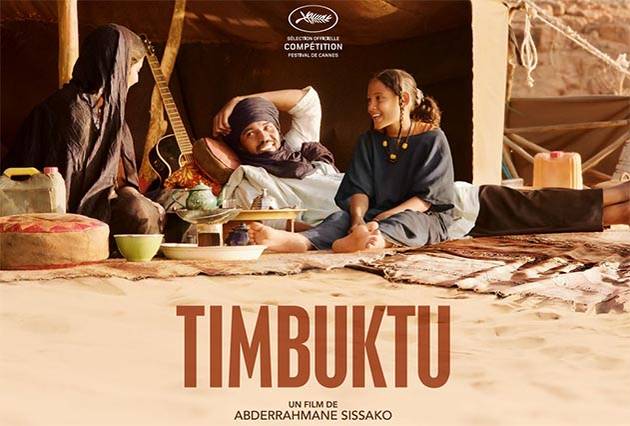African film comes to Woodland Theater
“Timbuktu” tells harsh story with beautiful photography
More stories from Sam Martinez
Photo by SUBMITTED
Watching “Timbuktu” was a different type of experience. It is not a film that relies on studio magic or obnoxiously exaggerated characters to attract viewers. “Timbuktu” is a realist film; it had the feel of a documentary, which suited the subject matter perfectly.
“Timbuktu” takes place in and around the Malian city of Timbuktu, which is occupied by Ansar Dine, a militant Jihadist group.
The plot follows a mistake made by Kidane, a cattle herder, that may leave his wife and daughter without a father. The film also explores the way other townspeople deal with the extreme cultural changes that are implemented by the Jihadists.
Released in 2014, “Timbuktu” is directed by Mauritanian director Abderrahmane Sissako and is a joint French-Mauritanian production. It was selected to compete for the Palm d’Or at the 2014 Cannes Film Festival and was nominated for an Academy Award for the best foreign language film category.
I really enjoyed the film, but it was a bit unsettling. As an American, it is hard to imagine a world where order is kept through the threatening glare of a loaded AK-47.
One major theme of the film was the role of religion in Northwestern African life. Timbuktu was a predominantly Islamic community, even before Ansar Dine took over control. But that didn’t stop the more extremist factions of Islam from changing daily life once they took control.
Music, art and community togetherness are things I have always associated with organized religion. However, all these things were banned or restricted by the religious fanatics in this film. Even soccer was banned and much of the film depicted how the townspeople quietly resisted these changes.
Although the film was touching and informative, my favorite aspect of it was the photography. The desert landscape, the gleaming river and the brick houses reflected natural light beautifully into the camera lens, making this one of the most visually appealing films I have seen.
Being so accustomed to movies made in studios and computers, I found it refreshing to see a film made so organically. Outside of Terrence Malick, I can’t think of any American directors that consistently give landscape the focus that Sissako did in this film.
Although I have enjoyed many films before from Europe, Latin America and Asia, I have never seen an African movie before. I believe films reflect the culture they are produced in. Watching “Timbuktu” helped me learn more about other cultures, and thus put American culture in better perspective.
I did thoroughly enjoy this film, but I cannot say I would recommend it to everybody. It is a foreign film, so if subtitles are difficult, maybe it is not for you. And weak stomachs be warned, there were a few disturbing scenes, most notably the stoning of an adulterous couple.
At the end of the day I would say “Timbuktu” is one of the best films I have seen in awhile. Through telling a real story with natural images, I would say the film was more than a bit impactful.

